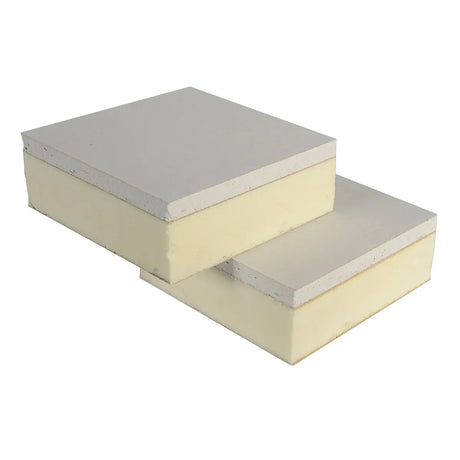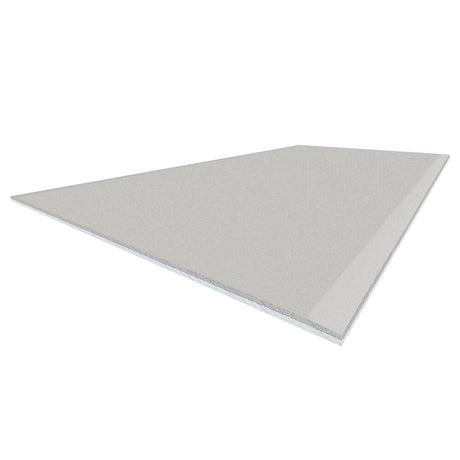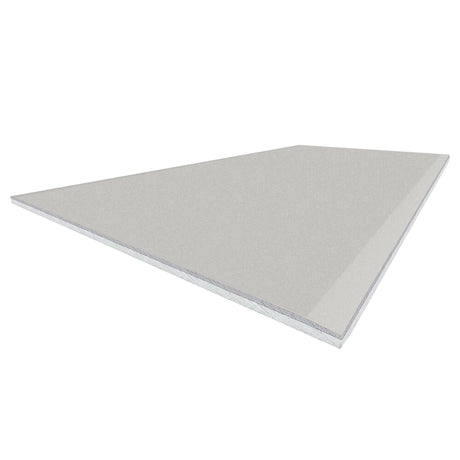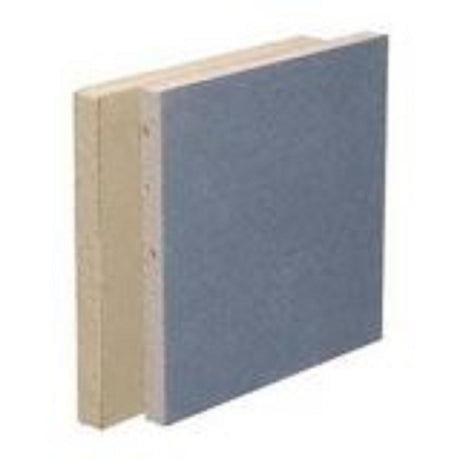Celotex
37.5mm Celotex PL4000 PIR Insulated Plasterboard - 2400mm x 1200mm
£29.28 Ex VAT£30.00£35.14 Inc VAT£36.00Unit price£0.00 Inc VAT/UnavailableCelotex
52.5mm Celotex PL4000 PIR Insulated Plasterboard - 2400mm x 1200mm
£35.60 Ex VAT£35.83£42.72 Inc VAT£43.00Unit price£0.00 Inc VAT/UnavailableCelotex
62.5mm Celotex PL4000 PIR Insulated Plasterboard - 2400mm x 1200mm
£38.56 Ex VAT£40.83£46.27 Inc VAT£49.00Unit price£0.00 Inc VAT/UnavailableCelotex
72.5mm Celotex PL4000 PIR Insulated Plasterboard - 2400mm x 1200mm
£43.59 Ex VAT£45.83£52.31 Inc VAT£55.00Unit price£0.00 Inc VAT/UnavailableCelotex
77.5mm Celotex PL4000 PIR Insulated Plasterboard - 2400mm x 1200mm
£50.91 Ex VAT£58.54£61.09 Inc VAT£70.25Unit price£0.00 Inc VAT/UnavailableBritish Gypsum
38mm British Gypsum Gyproc Thermaline Tapered Edge Plasterboard - 2400mm x 1200mm
£51.03 Ex VAT£58.51£61.24 Inc VAT£70.21Unit price£0.00 Inc VAT/UnavailableBritish Gypsum
53mm British Gypsum Gyproc Thermaline PIR Tapered Edge Insulated Plasterboard - 2400mm x 1200mm
£62.16 Ex VAT£69.86£74.59 Inc VAT£83.83Unit price£0.00 Inc VAT/UnavailableBritish Gypsum
63mm British Gypsum Gyproc Thermaline PIR Tapered Edge Insulated Plasterboard - 2400mm x 1200mm
£71.00 Ex VAT£82.27£85.20 Inc VAT£98.72Unit price£0.00 Inc VAT/UnavailableBritish Gypsum
78mm British Gypsum Gyproc Thermaline PIR Tapered Edge Insulated Plasterboard - 2400mm x 1200mm
£82.30 Ex VAT£88.95£98.76 Inc VAT£106.74Unit price£0.00 Inc VAT/UnavailableWarmline
37.5mm Warmline PIR Insulated Plasterboard 2400mm x 1200mm
£38.17 Ex VAT£45.80 Inc VATUnit price£0.00 Inc VAT/UnavailableWarmline
52.5mm Warmline PIR Insulated Plasterboard 2400mm x 1200mm
£44.28 Ex VAT£53.14 Inc VATUnit price£0.00 Inc VAT/UnavailableWarmline
62.5mm Warmline PIR Insulated Plasterboard 2400mm x 1200mm
£48.95 Ex VAT£58.74 Inc VATUnit price£0.00 Inc VAT/UnavailableWarmline
72.5mm Warmline PIR Insulated Plasterboard 2400mm x 1200mm
£53.72 Ex VAT£64.46 Inc VATUnit price£0.00 Inc VAT/UnavailableSiniat
22mm Siniat Thermal EPS Insulated Plasterboard - 1200 x 2400mm
£23.28 Ex VAT£27.94 Inc VATUnit price£0.00 Inc VAT/UnavailableSiniat
30mm Siniat Thermal EPS Insulated Plasterboard - 1200 x 2400mm
£26.34 Ex VAT£31.61 Inc VATUnit price£0.00 Inc VAT/UnavailableSiniat
40mm Siniat Thermal EPS Insulated Plasterboard - 1200 x 2400mm
£31.60 Ex VAT£37.92 Inc VATUnit price£0.00 Inc VAT/UnavailableSiniat
50mm Siniat Thermal EPS Insulated Plasterboard - 1200 x 2400mm
£37.32 Ex VAT£44.78 Inc VATUnit price£0.00 Inc VAT/Unavailable























